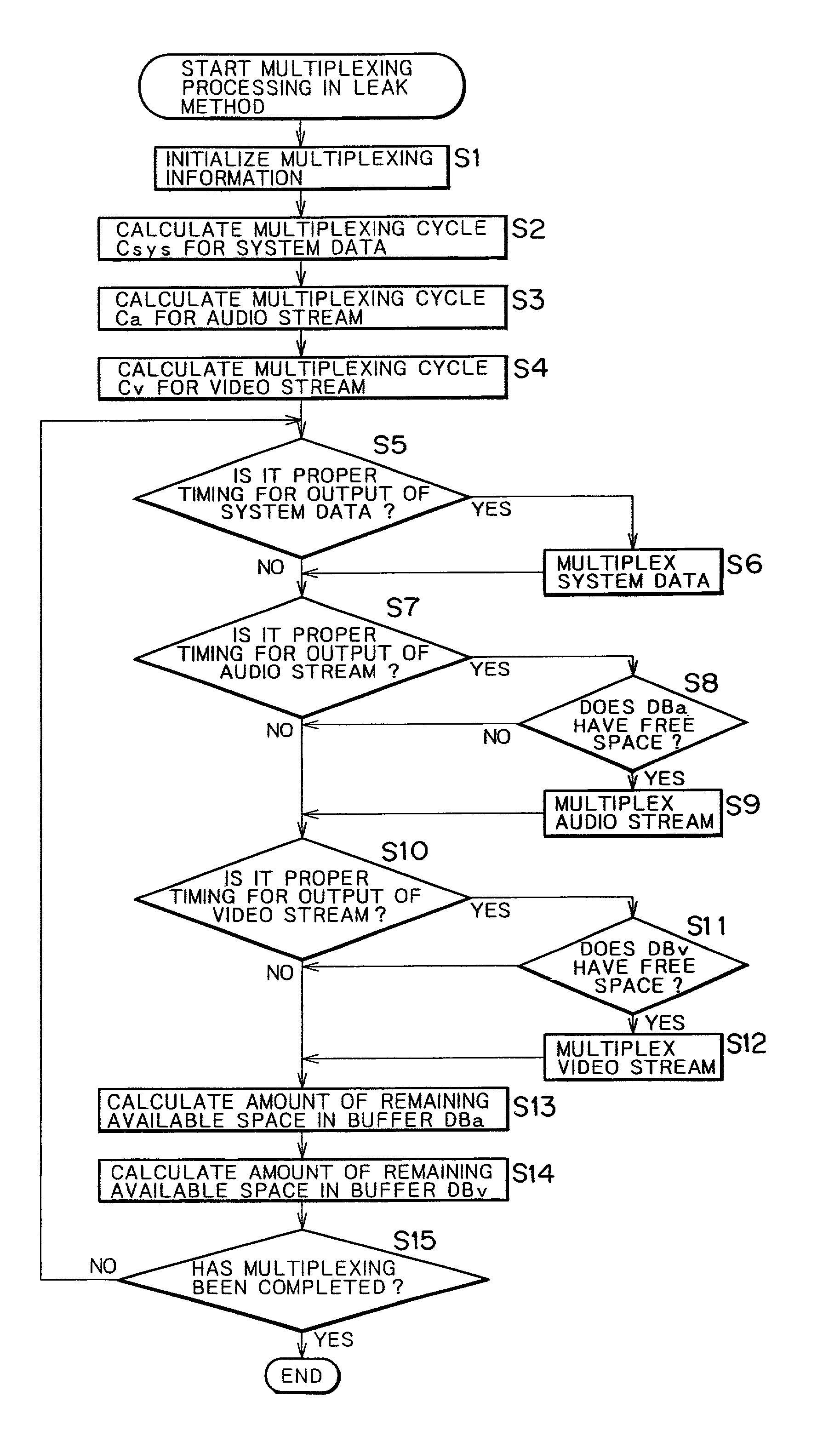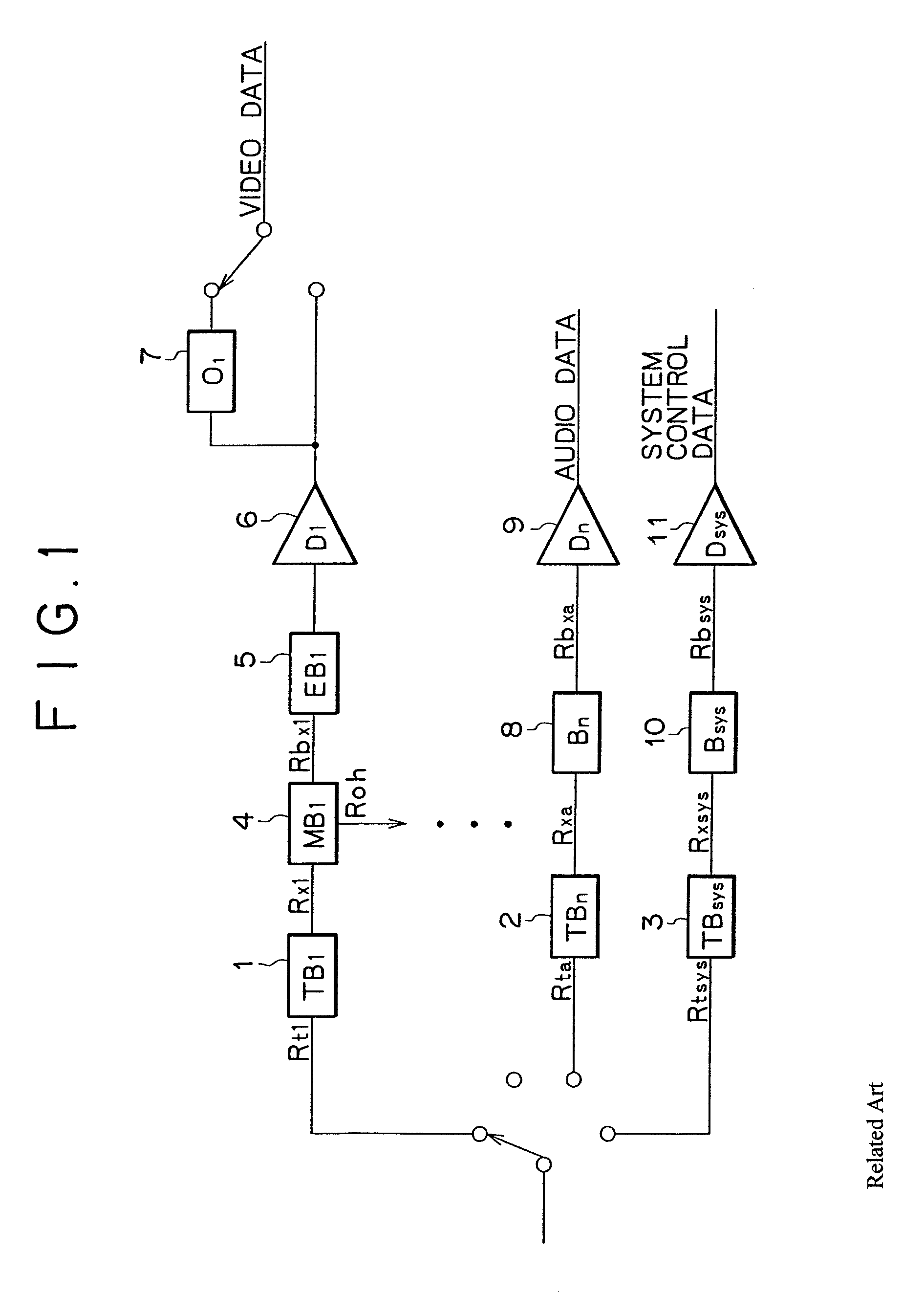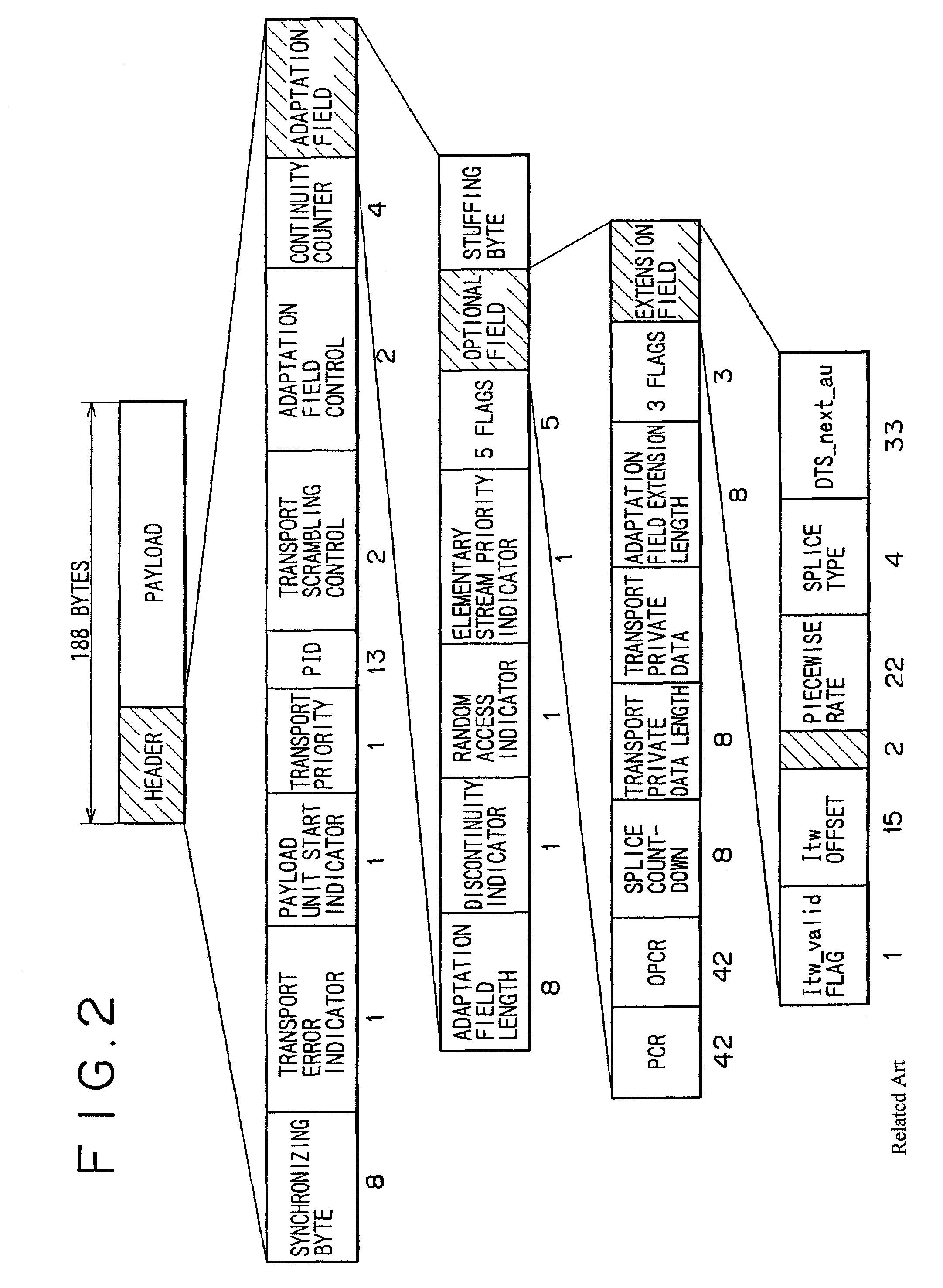Data multiplexer, data multiplexing method, and recording medium
a data multiplexing and data multiplexing technology, applied in the field of data multiplexing, data multiplexing method, recording medium, can solve the problem of not being able to perform simulation for the t-std model, and achieve the effect of reducing the amount of calculation necessary
- Summary
- Abstract
- Description
- Claims
- Application Information
AI Technical Summary
Benefits of technology
Problems solved by technology
Method used
Image
Examples
first embodiment
[0072]FIG. 6 is a block diagram showing configuration of a data multiplexer to which the present invention is applied. A video data encoder 54 compresses and codes a video input signal inputted from a terminal 51 to thereby generate and output a video elementary stream. An audio data encoder 55 compresses and codes an audio input signal inputted from a terminal 52 to thereby generate and output an audio elementary stream. A system data encoder 56 compresses and codes system data inputted from a terminal 53 and thereby outputs the resulting data. While FIG. 6 shows one video data encoder 54, one audio data encoder 55, and one system data encoder 56, a plurality of video data encoders 54 and audio data encoders 55 are provided so that the number of video data encoders 54 and audio data encoders 55 coincides with the number of channels of the corresponding data.
[0073]Data outputted from the video data encoder 54, the audio data encoder 55, and the system data encoder 56 is supplied to ...
second embodiment
[0106]FIG. 10 is a block diagram showing a multiplexer according to the present invention. The parts in the multiplexer of FIG. 10 corresponding to those of FIG. 6 are identified by the same reference numerals, and their description will be omitted where not necessary (same for embodiment below). The multiplexer of FIG. 10 basically has the same configuration as that of FIG. 6, except that the multiplexer of FIG. 10 does not have the access unit information detector 57, and is provided with a video data encoder 81, an audio data encoder 82, and a system data encoder 83 having a function of extracting access unit information, rather than the video data encoder 54, the audio data encoder 55, and the system data encoder 56.
[0107]The access unit information necessary for multiplexing scheduling, such as a picture coding type, access unit length, and decoding time, which would be detected by the access unit information detector 57 in FIG. 6, is obtained when video data, audio data, and s...
third embodiment
[0108]FIG. 11 is a block diagram showing a multiplexer according to the present invention. The multiplexer of FIG. 11 basically has the same configuration as that of FIG. 10, except that the multiplexer of FIG. 11 is provided with a bit stream multiplexing scheduler / multiplexer 91 instead of the multiplexing scheduler 59 and the bit stream multiplexer 58, and a drive 69 is connected to the bit stream multiplexing scheduler / multiplexer 91.
[0109]The bit stream multiplexing scheduler / multiplexer 91 carries out multiplexing scheduling by using access unit information supplied from a video data encoder 81, an audio data encoder 82, and a system data encoder 83, then multiplexes various data supplied from the video data encoder 81, the audio data encoder 82, and the system data encoder 83 according to the multiplexing schedule, and thereby outputs the result to an output terminal 60.
[0110]The series of processing steps described above may be carried out by software. The software is instal...
PUM
| Property | Measurement | Unit |
|---|---|---|
| time | aaaaa | aaaaa |
| size | aaaaa | aaaaa |
| Size | aaaaa | aaaaa |
Abstract
Description
Claims
Application Information
 Login to View More
Login to View More - R&D
- Intellectual Property
- Life Sciences
- Materials
- Tech Scout
- Unparalleled Data Quality
- Higher Quality Content
- 60% Fewer Hallucinations
Browse by: Latest US Patents, China's latest patents, Technical Efficacy Thesaurus, Application Domain, Technology Topic, Popular Technical Reports.
© 2025 PatSnap. All rights reserved.Legal|Privacy policy|Modern Slavery Act Transparency Statement|Sitemap|About US| Contact US: help@patsnap.com



